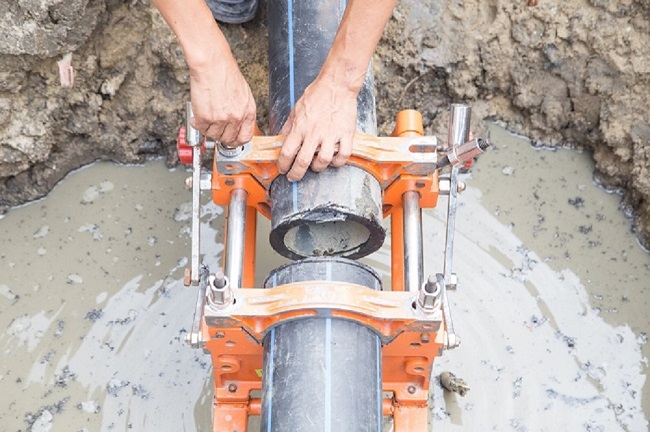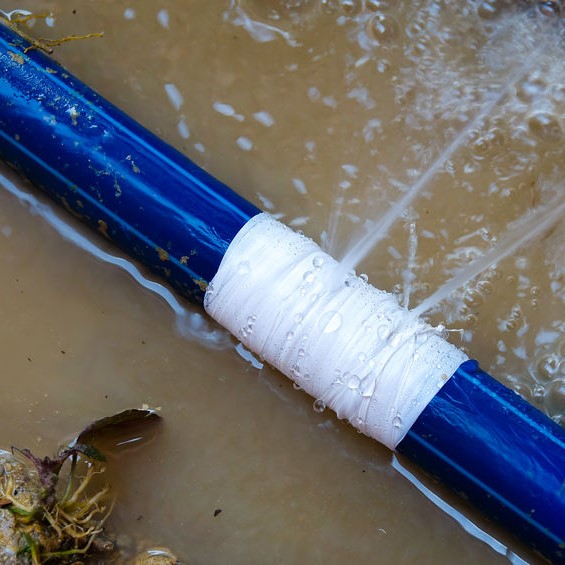Identifying and Speedily Resolving a Burst Pipe: A DIY Approach
Identifying and Speedily Resolving a Burst Pipe: A DIY Approach
Blog Article
What are your thoughts and feelings about How to Install and Connect a New Dishwasher?

A ruptured pipe is a significant emergency; you can only stand as you enjoy water you pay dearly to rejoin with the earth. In even worse cases, you observe a pool on your cooking area floor, which is a great trip hazard, particularly if you have youngsters around. If the pipeline that burst was in your walls, problem: you might need to paint that whole area.
Just how can a tragedy like a ruptured pipe be protected against and handled? Well, by paying attention to your specialist emergency plumbings as well as complying with these rules.
Exactly how do I recognize when my pipes have ruptured?
Fluctuating water pressures
Pipes do not simply burst in a day. You might have seen that your cooking area tap or shower doesn't run right away when you turn the tap. It may pause for a couple of secs and after that blast you with more force than common.
In various other instances, the water might appear regular in the beginning, after that drop in stress after a few secs.
Polluted water
Many people think a burst pipeline is a one-way outlet. Fairly the contrary. As water flows out of the hole or wound in your plumbing system, pollutants find their way in.
Your water might be contaminated from the source, so if you can, examine if your water tank has any type of troubles. Nonetheless, if your drinking water is supplied as well as detoxified by the local government, you should call your plumber promptly if you see or scent anything funny in your water.
Puddles under pipes as well as sinks
When a pipeline ruptureds, the outflow forms a pool. It may show up that the puddle is growing in size, and also no matter the number of times you mop the puddle, in a few minutes, there's an additional one waiting to be cleansed. Frequently, you may not have the ability to map the puddle to any noticeable pipelines. This is an indication to call a professional plumber.
Damp wall surfaces as well as water stains
Prior to a pipe ruptureds, it will certainly leak, most times. If this relentless leaking goes undetected, the leak might graduate into a broad gouge in your pipeline. One easy method to avoid this emergency is to keep an eye out for wet walls advertisement water discolorations. These water spots will lead you right to the leakage.
Untraceable leaking sounds
Pipe ruptureds can happen in the most undesirable areas, like within concrete, inside wall surfaces, or under sinks. When your house goes silent, you may have the ability to listen to an annoyingly consistent trickling sound. Also after you've checked your shower head and kitchen area faucet, the trickling might proceed.
Beloved viewers, the dripping might be originating from a pipeline inside your wall surfaces. There isn't much you can do about that, other than inform a professional plumber.
Turn up the Warm
Set up fans to blow warmth right into cold areas. Keep the garage door shut. If you have lowered water circulation, heat the most at risk pipelines (generally in cellars as well as crawl spaces or near outside wall surfaces) with a hair dryer. Leave the faucet on while you use warm. As you thaw ice, the circulation will raise. To avoid pipes from cold, protect your wall surfaces.
Start Removing the Water
Get hold of the wipe, pails as well as a shop vacuum cleaner to begin to do away with the water since you absolutely don't want it saturating into every little thing else in the house. Plus, a fast clean up will certainly decrease the opportunities of something getting musty.
What do I do when I find a burst pipe?
Your water meter will remain to run even while your water wastes. To lessen your losses, locate the major controls and turn the supply off. The water mains are an above-ground structure beside your building.
How to Fix & Detect a Leaking Pipe
How Do I Know if a Pipe is Leaking?
Leak detection tests can help you determine if your pipe has a leak. Even if you don’t see an apparent leak, you should still conduct leak detection tests regularly to save water and money—and prevent major damage to your home.
Water meter. It can be helpful to figure out what your usual water meter usage numbers are and then monitor them regularly. To monitor your meter, first, turn off all water faucets in your home. Check the meter and write down the numbers. In a few hours, check the meter again. If the numbers have changed, you have a leak. Water gauge. Use a water gauge to test your water pressure. Your showerhead should produce a certain amount of water pressure based on its model and design. If the pressure is lower than it is supposed to be for that specific showerhead, your home likely has a leak. Puddles. Look inside your bathroom, laundry, and kitchen sink cabinets. Puddles around the cabinets or around toilets, tubs, showers, and washing machines indicate the presence of a leaking pipe. You may also notice loose tiles, peeling or flaking paint, or mold caused by water accumulation. Napkin test. Even if you don’t see any puddles, you may still have a leak. You can test for water leaks in the bathroom, laundry, and kitchen by wiping below-sink connections with a napkin, paper towel, or piece of toilet paper. If it becomes damp, you probably have a leaking pipe under the sink. Discolored walls. Walls that are discolored—usually with brown or yellow stains—or bulging might mean that they have been impacted by water damage caused by a leaking pipe. Smell. A leaky pipe will create sitting water, and over time, that water may develop a musty smell. If your home smells musty, but you can’t locate the source, it may be due to a leak. Steps for Fixing a Leaking Pipe
A leaky drain can be remedied by tightening the pipe base, replacing the drain seal, caulking the rim, and tightening the pipe nut. Similarly, a leaking toilet pipe can be treated by tightening the packing nut. You may also need to replace the valve. A leaky faucet may just need tightening or replacement of the washers. If that doesn’t work, consider replacing your faucet. If your pipe has a hole in it, you may want to use a pipe leak sealer or pipe leak tape. This quick fix for water pipe leaks can also temporarily fix a copper pipe leak. https://www.ahs.com/home-matters/quick-tips/how-to-tell-if-pipes-are-leaking/

I found that blog post about How to install a dishwasher safely while exploring the search engines. Sharing is caring. You never know, you may be doing someone a favor. Kudos for your time. Visit again soon.
Ensure plumbing safety. Report this page